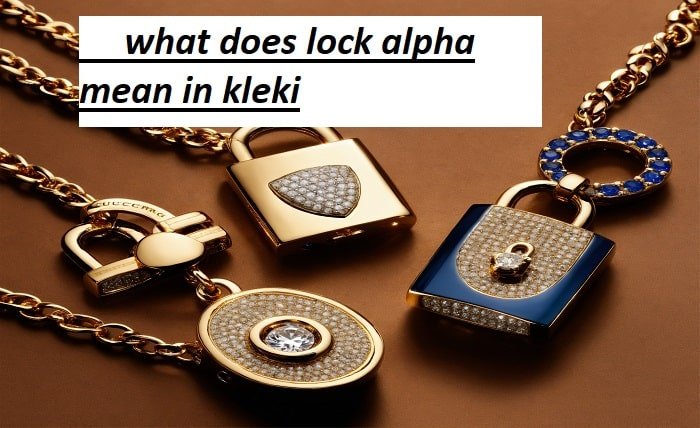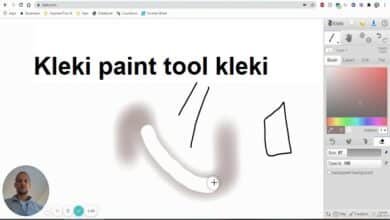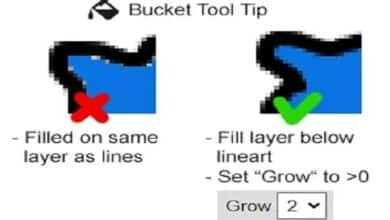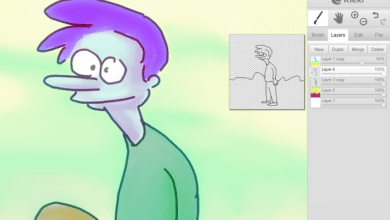What Does Lock Alpha Mean in Kleki: A Complete Guide

If you’ve been experimenting with Kleki, a popular online painting and drawing tool, you may have encountered the term “lock alpha.” For many digital artists, understanding tools like “lock alpha” is crucial for achieving precision and efficiency in their work. This term refers to a feature that can help you manipulate specific areas of a layer without affecting others. But what does it really mean, and how can you use it to improve your art?
In this blog post, we will explore what “lock alpha” means in Kleki, why it’s important, and how you can use it to enhance your digital artwork. We’ll break down the feature step-by-step, cover its potential uses, and provide tips for beginners who want to master it. By the end of this post, you will have a solid understanding of how “lock alpha” can play a pivotal role in your creative process.
What Is Lock Alpha in Kleki?
At its core, “lock alpha” is a feature in Kleki that allows you to lock the transparency of a specific layer. When you apply “lock alpha” to a layer, you prevent any further edits to the transparent areas of that layer. This means you can paint, draw, or apply effects only to the areas that already have color or shading, leaving the transparent parts unaffected.
This feature is particularly useful in digital painting, where you often want to add details, highlights, or shadows to specific parts of your artwork without unintentionally altering the background or transparent areas. For example, if you’re painting on a character’s hair layer, locking the alpha would allow you to paint over the hair without affecting the transparent areas around it.
In Kleki, this feature is often represented by an icon or a button that you can toggle on and off. When enabled, you’re free to paint on the colored areas while keeping the transparency intact. This allows for greater control and flexibility in your creative process.
Why Is Lock Alpha Important for Digital Artists?
Now that you know what “lock alpha” is, it’s important to understand why it’s such a valuable tool for digital artists. When working with multiple layers, it’s easy to accidentally paint over areas you didn’t intend to alter. This is especially true when using brushes or tools that are capable of applying strokes outside the boundaries of a layer’s colored content. Lock alpha eliminates this risk by ensuring that only the colored areas of your artwork are affected.
One of the key benefits of “lock alpha” is that it enhances workflow efficiency. Artists can focus on adding details and refinement without worrying about mistakes in the transparent areas. For instance, if you’re adding texture to a layer, you don’t have to constantly zoom in and erase areas outside the colored regions. By locking the alpha, you can confidently apply changes, knowing that the transparency will remain untouched.
Furthermore, locking the alpha can save time when working with complex artworks that involve multiple layers and intricate details. This makes it an essential tool for anyone looking to streamline their digital painting or design process in Kleki.
How to Use Lock Alpha in Kleki
Using the “lock alpha” feature in Kleki is relatively straightforward, and understanding how to enable it will give you greater control over your artwork. Here’s a simple step-by-step guide to using “lock alpha” in Kleki:
- Select the Layer: First, make sure the layer you want to work with is selected. You can find the layer panel on the right side of the screen in Kleki.
- Enable Lock Alpha: Once the desired layer is selected, look for the lock alpha button or icon (usually located near the layer settings). Click the icon to lock the transparency of that layer.
- Start Painting: With the alpha locked, begin painting or editing your layer as you normally would. You will notice that any brush strokes applied to the transparent areas of the layer will not show up.
- Disable Lock Alpha: If you need to unlock the alpha for further editing, simply click the lock alpha icon again to disable it.
This process helps you stay organized while maintaining control over your artwork. By locking the alpha, you ensure that the areas you don’t want to change remain untouched, allowing you to focus on the finer details of your piece.
How Lock Alpha Impacts Layer Transparency
Lock alpha plays a significant role in managing layer transparency, especially when you’re working with layers that have varying levels of opacity or transparency. When you lock the alpha channel, you’re essentially telling Kleki to treat the transparent regions of the layer as “locked,” meaning no color or edits can be applied to those areas.
This is useful in several scenarios. For instance, if you’re working on a character’s skin tone layer and you want to add some shading or highlights, locking the alpha allows you to modify only the skin’s surface without accidentally touching any transparent areas or background elements.
Another important aspect is that when alpha is locked, it prevents any accidental painting over areas that are intentionally transparent. This is particularly useful when working with elements like glows, shadows, or soft effects that rely on transparency to maintain their visual integrity.
By locking the alpha, you gain finer control over how your artwork evolves without worrying about unintentionally altering the parts of your painting you want to keep transparent.
Lock Alpha for Efficient Digital Painting in Kleki
Efficient digital painting often requires balancing multiple layers and focusing on one area at a time. When you’re creating complex artworks, whether it’s a portrait or a landscape, managing each layer effectively is key to achieving a polished result. This is where “lock alpha” becomes especially useful.
For example, imagine you are painting a character in Kleki, and you’re working on a detailed layer for their clothes. Locking the alpha ensures that you can paint the texture, folds, and shadows on the clothes without the risk of accidentally painting over the background or other elements that should remain transparent.
Moreover, when using brushes that have a wide range of effects, like a watercolor or airbrush tool, locking the alpha prevents unwanted strokes in the transparent sections, leading to cleaner and more precise results. This feature essentially helps you save time by limiting the need for constant corrections and touch-ups.
By incorporating “lock alpha” into your digital painting workflow, you’ll be able to create more detailed and cohesive art with less effort.
Advanced Tips for Using Lock Alpha in Kleki
While “lock alpha” is a relatively simple tool to use, there are several advanced techniques that can help you maximize its potential in Kleki. Here are some tips for getting the most out of this feature:
- Layer Organization: Organize your layers into specific categories (e.g., background, character, details, etc.) to make the most of “lock alpha.” This way, you can lock the transparency of individual layers based on the elements you’re working on at any given time.
- Combine with Masks: Lock alpha can work in tandem with layer masks to refine your artwork even further. Using both tools can help you mask out areas you don’t want to paint, while allowing for detailed editing on locked layers.
- Use for Texturing: If you’re applying texture to a character’s clothing, skin, or other areas, locking the alpha ensures that the texture is applied precisely to the colored parts without affecting the transparent portions.
- Experiment with Different Brushes: Try using different brushes or textures while “lock alpha” is enabled. This will give you more control over the way your brushes interact with transparent and non-transparent areas.
By applying these tips, you’ll be able to make your digital painting process even more efficient and effective. With “lock alpha,” you can confidently focus on adding details, shading, and highlights without worrying about damaging the transparency of your artwork.
Conclusion
In conclusion, understanding what “lock alpha” means in Kleki and how to use it effectively can significantly improve your digital artwork. Whether you’re a beginner or a more advanced artist, this feature allows you to manipulate specific areas of a layer while preserving the transparency of other parts, giving you greater precision and control.
By following the steps outlined in this guide, experimenting with advanced techniques, and incorporating “lock alpha” into your regular workflow, you’ll be able to create cleaner, more polished digital paintings in Kleki. As you become more familiar with this tool, you’ll find that it’s an essential part of your digital painting toolkit that enhances both your speed and the quality of your work.
FAQs
1. What does “lock alpha” do in Kleki?
“Lock alpha” in Kleki locks the transparency of a layer, allowing you to paint only on the non-transparent parts without affecting the transparent areas.
2. How do I enable “lock alpha” in Kleki?
You can enable “lock alpha” by selecting the desired layer and clicking the lock alpha icon in the layer settings. This will prevent edits to the transparent areas of the layer.
3. Can I use “lock alpha” with any brush in Kleki?
Yes, you can use “lock alpha” with any brush in Kleki. It will ensure that your brush strokes only affect the non-transparent areas of your layer.
4. Why should I use “lock alpha” in digital painting?
“Lock alpha” helps prevent accidental edits to transparent areas, allowing you to focus on detailed work and texture applications without disrupting your layer’s transparency.
5. Can “lock alpha” be disabled in Kleki?
Yes, you can disable “lock alpha” by clicking the lock alpha icon again. This will allow you to edit both the transparent and non-transparent areas of your layer.





